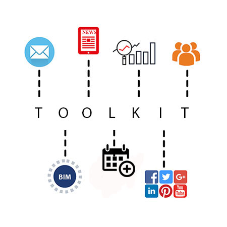Guest post provided by Chris Ashworth
Introduced in the 1960s Design & Build (D&B) is now widely used in commercial applications. This form of construction contract sees the Client appointing a consultancy team to work up an outline design, get planning permission and define key requirements. The Design and Build Contractor then, following a selection process, has responsibility for design.
In the instance of Design and Build, the Contractor has significantly greater influence over product selection, with a focus on value engineering. However the objective is still to deliver the Client’s requirement in a cost effective manner. Since the adoption of Design & Build, the influence of the Architect has reduced. The D&B Contractor may even provide the Architect with a list of approved materials to select from. Within the contractor organisation, it is the Design Manager who will understand the Client’s needs, brief the Architects and manage the project.
Here are some facts to consider:
There is a common misconception that all the Main Contractor is interested in is price. But this is because most manufacturer and supplier sales people only deal with the Buyer. The Buyer will have a bill of materials and it is his job to drive down the cost of purchase as much as possible. It is thus not surprising that this is his focus.
Although every commercial organisation has an eye to profit, within the Main Contractor organisation there are other influencers who have other priorities.
• The Estimating Department want to know about the compatibility and availability of products.
• The Contract Manager will be interested in sub-contractor familiarity and minimising disruption to the build programme.
• The Design Manager will be interested in the most efficient solution to provide a first class outcome.
• The Buyer will have a bill of materials and the task of driving down the cost of purchase by as much as possible.
The Design Manager’s influence on specification
The Design Manager is responsible for developing the building design from the Client's brief and sometimes even developing the initial concept design. Working with the design team, the Design Manager has an enabling and co-ordinating role, but is not acting as a designer themselves. Design Managers bring together architects, structural engineers and services engineers, along with specialist designers, with the aim of producing a coordinated design.
It is a misconception that the contractor is always looking for the cheapest product, often a more holistic approach is applied when looking for best value. The Contractor is seeking the most effective solution for the project, he is looking for quality, price, availability and then technical support.
Influencing contractors
With the implementation of Building Information Modelling (BIM) the Contractor’s influence will grow. BIM is facilitating a shift in relationships between Main Contractor/Sub-Contractor within the decision making unit (DMU). The collaborative environment, achieved through data sharing, means that Main Contractors and Sub-contractors are getting involved at earlier stages of construction. This in turn means influencing construction product specification through BIM enabled models, prior to on-site installation.
Main Contractors understand that BIM can deliver better quality, lower costs and more predictability in terms of delivery. A natural fit with the Main Contractor, who needs to deliver their project on time and to budget. For this reason, to engage with Main Contractors, it is important that the manufacturer supports the BIM process.
Value from a manufacturer or supplier could come from offering a comprehensive product range, good availability, technical support, removing critical items from the time line or easy installation. It is also achieved by providing support in meetings, developing new products or working to solve problems.
In summary the Main Contractor is looking for products that offer ease of installation, good availability and represent value. They want confidence that their Sub-Contractors are familiar with installation, to avoid complications. They need to know that building work will not be delayed by lack of product availability and that the product cost remains within the estimate, so they can remain profitable.
Competitive Advantage have developed an Contractor Persona which is available for you to purchase and download.
Further Information
Promoting your company and building products with Barbour Product Search can help to increase your visibility to the full specification audience. Email editor@barbourproductsearch.info for more information.
Sign up to the Competitive Advantage newsletter for an overview of construction market activity as well as construction sales and marketing advice.
Chris is a specialist in specification strategy and founder of Competitive Advantage Consultancy which specialises in market research and training for the construction industry. He is a member of the BIM4M2 steering group and Deputy Chair of the organising committee for CIMCIG, the Chartered Institute of Marketing’s Construction Industry Group.
Related Blog Articles



![Communicating with specifiers & developing a personalised persona [EVENT] Communicating with specifiers & developing a personalised persona [EVENT]](/20/blogentry/00/04/48/th382.png)







![A strategy for communicating with specifiers [EVENT] A strategy for communicating with specifiers [EVENT]](/20/blogentry/00/03/82/th382.png)